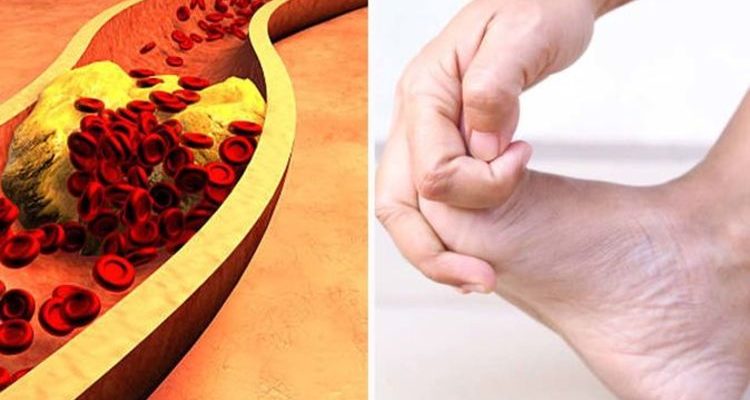Dr Chris reveals how eyes can indicate high cholesterol levels
We use your sign-up to provide content in ways you’ve consented to and to improve our understanding of you. This may include adverts from us and 3rd parties based on our understanding. You can unsubscribe at any time. More info
The NHS notes that PAD is a common condition where a build-up of fatty deposits in the arteries restricts blood supply. It says the condition is usually caused by a build-up of fatty deposits, which are made up of cholesterol and “other waste substances”. In some instances signs of PAD can show up on your toes.
The NHS states: “The symptoms of PAD often develop slowly, over time. If your symptoms develop quickly, or get suddenly worse, it could be a sign of a serious problem requiring immediate treatment.”
Healthline says that symptoms of early PAD may include cramping, achiness, fatigue, pain in the legs during activity or exercise, called intermittent claudication, and discomfort in the legs and feet.
The site says that as PAD progresses, “symptoms occur more frequently and even occur when you are at rest”.
Later symptoms that may occur because of reduced blood flow include several on your toes.

They are the sensation of burning in your toes, thick toenails, and toes that turn blue.
Healthline notes that other signs include thinning, paleness, or shininess on the skin of the legs and feet and tissue death caused by lack of blood supply, called gangrene.
You may also find that you have ulcers on the legs and feet that don’t heal or heal very slowly, leg pain that doesn’t go away when at rest, reduced hair growth on the legs, and a decrease in the temperature of your lower leg or foot, compared to the other leg.
“People with PAD have a higher risk of having a heart attack, stroke, or limb amputations,” warns the health site.
Despite this, high cholesterol does not tend to cause symptoms, so you should find out if you have it from a blood test.
The NHS says that more than two in five people in England have high cholesterol “which puts them at significant risk of developing heart disease”.
It adds that around 6.5 million adults in England are currently taking lipid-lowering drugs such as statins.
Statins are the most common medicine for high cholesterol, according to the health service, and work by reducing the amount of cholesterol your body makes.

Fortunately changing what you eat, being more active, and stopping smoking can often help get your cholesterol back to a healthy level.
The Heart and Stroke Foundation of Canada says: “As a rule of thumb, steer clear of highly processed foods, even if they are lower in fat content. Low-fat or diet foods are often loaded with calories, sodium and added sugar.”
It says that it is also a good idea to add more vegetarian options like beans, lentils, tofu and nuts to your weekly meal plans, and “get in the habit of filling half your plate with vegetables and fruit”.
The NHS notes that there are two main types of fat, which are saturated and unsaturated. Eating too many foods high in saturated fat can raise the level of cholesterol in your blood.

The health body says most people in the UK eat too much saturated fat. If you’re aged 40 to 74, you can get your cholesterol checked as part of an NHS Health Check.
The British Heart Foundation (BHF) recommends all adults have a cholesterol check at any age, even if they feel completely well. It should be repeated every five years – or more often if the test was abnormal.
The cholesterol blood test measures your levels of total cholesterol, LDL cholesterol, HDL cholesterol, and your total cholesterol to HDL ratio.
Your total cholesterol should be 5mmol/L or less for healthy adults or 4mmol/L or less for those at high risk.
Source: Read Full Article
